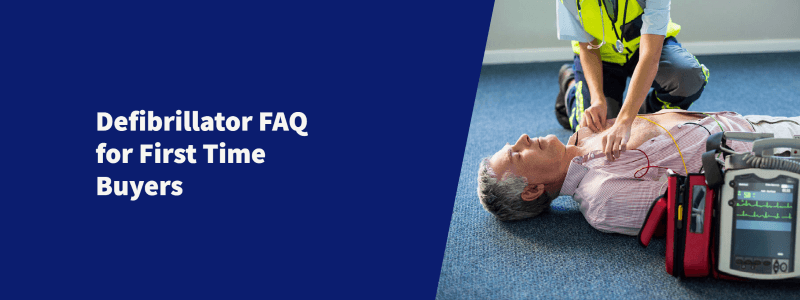For some first time buyers, it can be difficult to figure out what you need to know about defibrillators. Here, we give first time buyers some information on defibrillators in the U.K.
Are defibrillators a legal requirement in the U.K?
There is no legal requirement for there to be defibrillators on high streets or in workplaces and schools. Yet while this is the case, there are a number of campaign groups that have been set up with the aim of creating legislation that ensures local communities have access to them. Charities such as the Oliver King Foundation have the aim of a “Campaign for and secure legislation that will ensure every school in the UK has access to a lifesaving defibrillator”.
How much does a defibrillator cost in the U.K?
Defibrillator costs vary drastically. There are a number of options with different types of features. For example, the defibrillators with video screen for instructions are likely to be more expensive than their audio counterparts. Our range spans from £670 to £1000+. These prices are competitive but still high-quality machines.
Does a defibrillator stop the heart?
A defibrillator does not stop the heart. A defibrillator is used to start the heart when a cardiac arrest happens. The shock to the heart can return it to normal rhythm and help the patient survive even when there isn’t a professional medic around. Upon an ambulance arriving, they can take further care of the patient. But the defibrillator will not stop to heart.
What are the dangers of a defibrillator shock?
While defibrillators are designed to save lives, there are some small dangers that you need to be aware off. This is natural when dealing with a piece of electrical equipment that gives a strong shock. One of the most obvious dangers is by using the AED in an explosive environment. Here, any spark can cause a fire, and that’s a dangerous possibility, especially when you have other flammable items around.
Another danger for an AED defibrillator is water. Water is a strong conductor of electricity. You should always dry off a patient before administering a AED shock, in case of causing more harm than good.
An additional danger is the patient having a pacemaker or implanted defibrillator device. If you know this to be the case, put the shock pads 1 inch away from the implants. It’s possible, or probable, that you don’t have this information. In such case, always place the pads where instructed by the defibrillator.
How many volts is a defibrillator?
The voltage of a defibrillator changes with each machine. The range is from approx. 200 – 1000 volts. It’s important to remember that regardless of voltage, if someone is suffering from a cardiac arrest, then the best thing you can do is use the nearest defibrillator, regardless of voltage.
How often should a defibrillator be checked?
Defibrillators should be frequently checked for power and wear and tear. For battery power, most defibrillators will have a built-in checking system, that alerts the owner as to whether they need to replace the battery. This will be a noise or LED light. Other than this, you should manually check your defib every few weeks. This should be checked for damage/theft and whether or not any new items are needed. Batteries and pads need replacing after a certain time, so it is worth having these in stock in case the need for replacements arises.
Back
